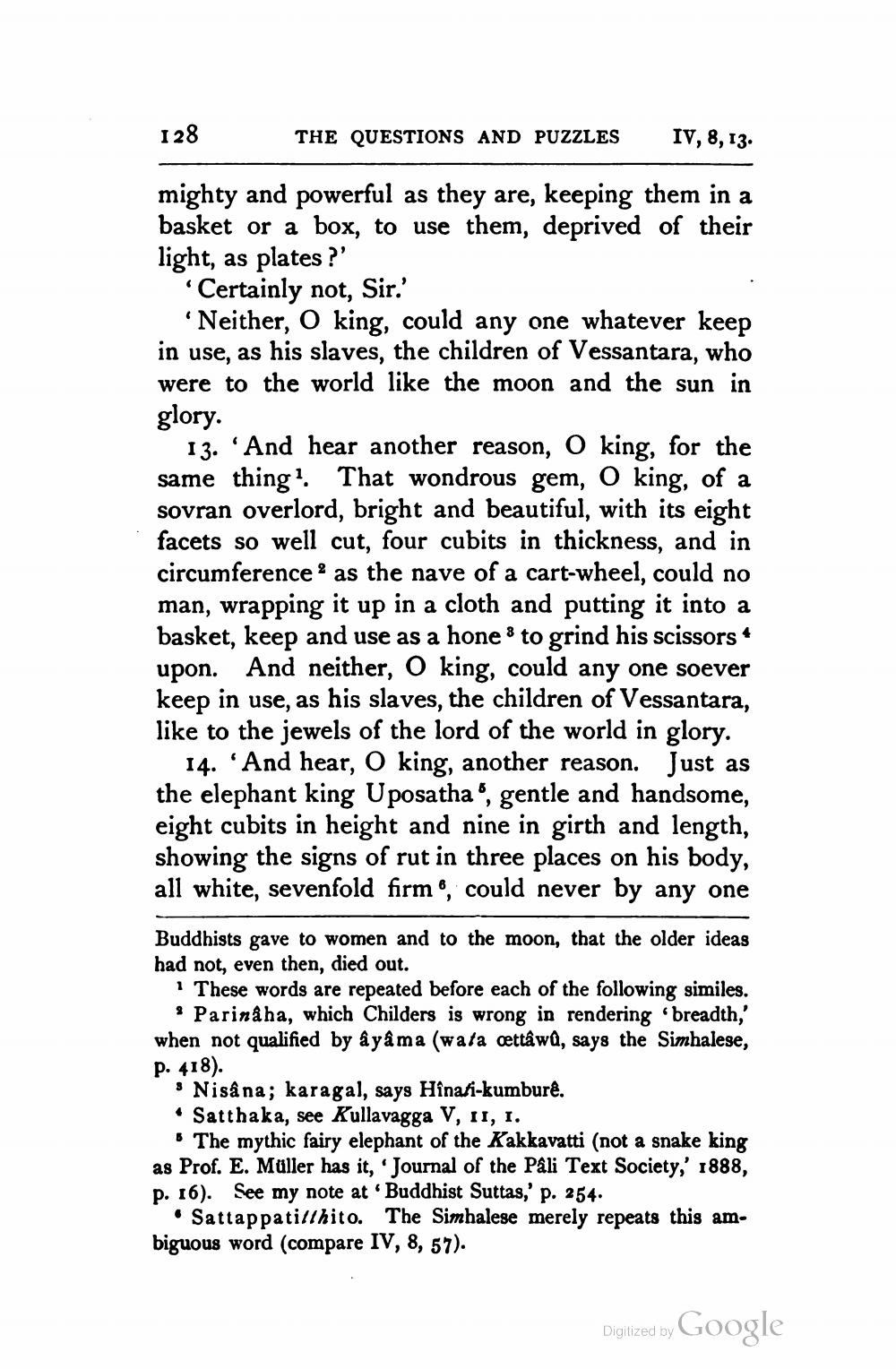________________
IV, 8, 13.
mighty and powerful as they are, keeping them in a basket or a box, to use them, deprived of their light, as plates?'
'Certainly not, Sir.'
'Neither, O king, could any one whatever keep in use, as his slaves, the children of Vessantara, who were to the world like the moon and the sun in glory.
128
THE QUESTIONS AND PUZZLES
2
13. 'And hear another reason, O king, for the same thing1. That wondrous gem, O king, of a sovran overlord, bright and beautiful, with its eight facets so well cut, four cubits in thickness, and in circumference as the nave of a cart-wheel, could no man, wrapping it up in a cloth and putting it into a basket, keep and use as a hone3 to grind his scissors * upon. And neither, O king, could any one soever keep in use, as his slaves, the children of Vessantara, like to the jewels of the lord of the world in glory.
14. 'And hear, O king, another reason. Just as the elephant king Uposatha", gentle and handsome, eight cubits in height and nine in girth and length, showing the signs of rut in three places on his body, all white, sevenfold firm, could never by any one
Buddhists gave to women and to the moon, that the older ideas had not, even then, died out.
1 These words are repeated before each of the following similes. Parinâha, which Childers is wrong in rendering 'breadth,' when not qualified by âyâma (wafa cettâwû, says the Simhalese, p. 418).
Nisâna; karagal, says Hînafi-kumburê. Satthaka, see Kullavagga V, II, I.
The mythic fairy elephant of the Kakkavatti (not a snake king as Prof. E. Müller has it, 'Journal of the Pâli Text Society,' 1888, p. 16). See my note at 'Buddhist Suttas,' p. 254.
⚫ Sattappati//hito. The Simhalese merely repeats this ambiguous word (compare IV, 8, 57).
Digitized by
Google




